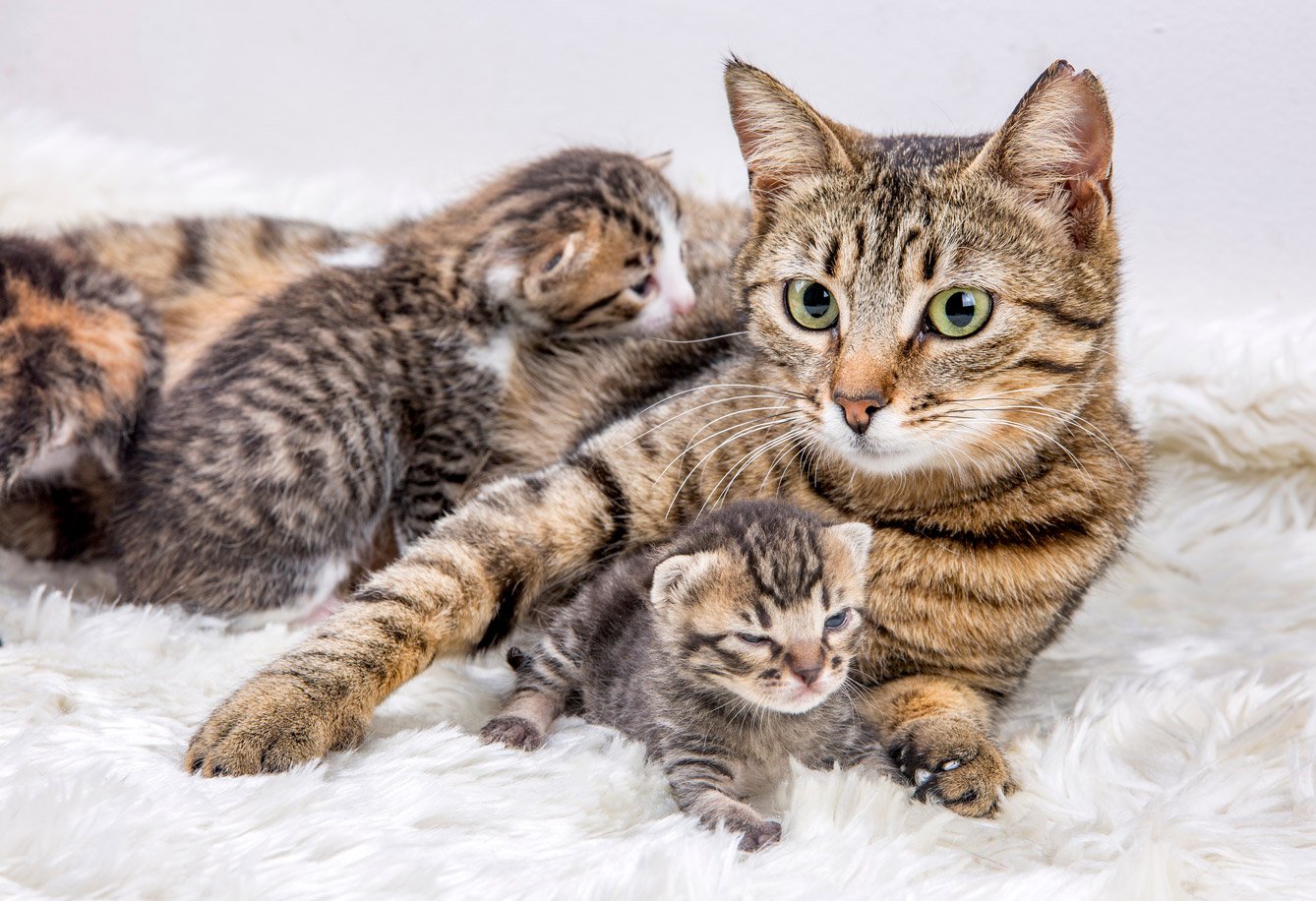cover: PhotobyTawat | Shutterstock
Vaccinations for dogs and cats | Basic immunisation and boosters. Vaccinating dogs and cats is an essential part of comprehensive health care. Have you ever asked yourself why this is so?
Vaccinated animals are protected against dangerous pathogens. Vaccination trains the immune system for emergencies: sufficiently vaccinated animals that become infected do not contract the corresponding diseases or only develop mild symptoms. But what exactly happens in the body after a vaccination and why does it have to be repeated regularly? We explain it.
Basic immunisation creates a solid basis
Basic immunisation is the term used for all vaccinations given during the first two years of an animal's life. During this time, vaccination protection is built up. The immune system is confronted with the pathogen and forms defence cells and antibodies which can remain in the organism for up to years and protect the animal from infection during this time.
The first protection a kitten or puppy receives is mainly during suckling. The maternal antibodies in the mother's milk pass into the blood via the intestines and form an important barrier against infectious agents. They bind to pathogenic bacteria and viruses, whereupon the immune system is activated and the defence cells render the invaders harmless.
For the first weeks of your four-legged friend's life, this mechanism is essential for survival. If the puppies or kittens are no longer suckled, they no longer receive antibodies through their mother's milk. The immune system must now start working itself. Long-term protection is guaranteed when the defence cells of the kittens produce antibodies themselves. These so-called specific antibodies are a perfect match for the pathogen in question and remain in the blood for longer. You can compare the bond between antibodies and pathogens with the lock and key principle: Just as a key only fits into a specific lock, each specific antibody fits exactly with a pathogen.
Basic immunisation induces the formation of such antibodies until a sufficient concentration is reached in the blood. This can be measured and is called the antibody titre.
Esin Deniz | Shutterstock
The problem of the immunological gap
Finding the right time for the first vaccination is not always that easy. In order to ensure continuous protection against diseases, it should coincide with weaning if possible, because the mother's antibody titre also decreases due to the decrease in breast milk intake. The problem with this is that the mother's antibodies, which are still present, bind to the attenuated pathogens of the vaccination and render them harmless without stimulating the kitten's or puppy's own immune system. Therefore, no new antibodies are formed and the vaccination is ineffective.
This is why the StIKo Vet - a committee of veterinarians that makes recommendations on vaccination for pets and livestock - recommends several successive vaccinations at intervals of three to four weeks during this period. Let's look at a concrete example: If a puppy is vaccinated for the first time in the 8th week of life, it should be revaccinated in the 12th and 16th week of life.
The older an animal is, the more likely it is that the maternal antibodies have already been broken down. In animals whose first vaccination takes place after the 16th week of life, the third, and in some cases even the second revaccination can be dispensed with. So why not always vaccinate later? Especially if there is a high risk of infection for the young animals, for example in farms with regular outbreaks of disease, they can already become severely ill at weaning with decreasing maternal antibody levels. To prevent this, they need to be vaccinated earlier and more often.
Repeat vaccinations maintain protection
All vaccinations after basic immunisation are called booster vaccinations. They do not build up the vaccine protection any more, but maintain an antibody level that reliably wards off possible infections. Depending on the vaccine and the pathogen, the intervals, i.e. the intervals between the repeat vaccinations, vary and can be up to three years. You can find the patient information leaflet of all vaccine preparations with the respective manufacturer's instructions on the internet. Of course, you can also ask your veterinarian about this topic.
When does my pet have to have its next vaccination?
The vet will enter the next vaccination date in the pet's vaccination record. You can also save it in the confidu app. There you have all your pet's health data and appointments bundled in a patient file.
If you want to know more about the individual vaccines, you can read about them in these articles:
The confidu magazine is written by our veterinarians according to current scientific standards. The articles do not replace a veterinary diagnosis, but are intended to provide you with initial information on many topics related to your animal. If you have specific questions about your pet, our vets will be happy to advise you via the confidu app.






